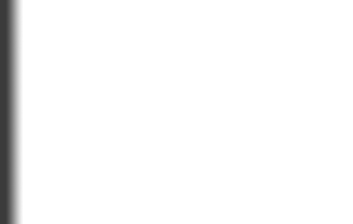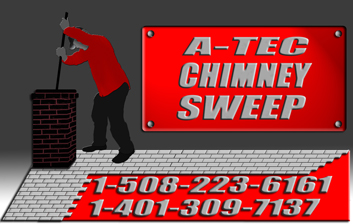- A stainless steel device installed at the top of your chimney to prevent rain & animals from entering the chimney flue.
- In the past, some masonry chimneys were built without any liner at all but the majorty were built using terra cotta clay or pumice, which can crack from chimney fires, settling, or other causes. Cracks in a liner will let the smoke and liquid creosote through causing leaks through the mortar joints and letting smoke into the house.
- Repointing is the process of renewing mortar joints in masonry construction. Over time, weathering and decay causes voids in the joints between masonry units (usually bricks) allowing the undesirable ingress of water while deteriorating your chimney. If left unfixed weathering will continue to deteriorate the chimney beyond repointing repair at which point it will need to be torn down and rebuilt.
- One of the major causes of chimney leaks is faulty flashing. Proper flashing around a chimney includes two layers. The first is called step flashing: Sections of L-shaped sheet metal are woven into the shingle courses and lapped up the side of the chimney. Next comes the counterflashing: A second layer of metal is embedded in the chimney mortar joints and folded down to cover the top of the step flashing.
- The movable iron plate that regulates the draft in a stove, chimney or furnace can deteriorate and malfunction over time which may require repair or replacing. ***Never start a fire with a broken damper, if it's stuck or falls into the closed or partially closed position it will redirect the deadly carbon monoxide gas back into your home***
- If a chimney has fallen into a state of disrepair it will then need to be brought down and rebuilt to be brought back up to code.
- Level I inspection consists of an examination of the readily accessible portions of the chimney exterior, interior. The technician will check for the basic soundness of the chimney structure and flue as well as the basic appliance installation and connections. The technician will verify the chimney is free of obstruction and combustible deposits.
- Level II is a more in-depth inspection which is required when changes are made to the system including fuel type, shape, or relining, or after seismic events, building fires, or real estate sale.
- Level III inspection is necessary if a level I or II inspection suggest a hidden hazard, Level III addresses the proper construction and condition of concealed portions of the structure.
- The purpose of having gutters is to divert the rainwater from your roof away from your house. If the gutters are full of debris or the downspouts are clogged the gutters do not function properly and the water from your roof may go under your house, potentially compromising your foundation or flooding your basement. Clogged gutters can also lead to water damage to your wood trim and siding.
- Your chimney is a dark & warm enclosure which makes it an ideal spot for small animals (commonly found animals are birds, squirrels & raccoons) Birds will often make use of chimneys as nesting spots which block the flue with flamable material creating fire and Carbon Monoxide hazard. Rodents will also venture down into the flue while getting stuck on the smooth tera cota lining. Animal removal is our most frequent emergency call. All care is considered when removing animals and relocating them into their wild habitat.
- Masonry is very porous. Over time due to weathering water will leach into the masonry and break down the mortar holding together the chimney. Our water proofing with siloxane penetrates into the masonry alowing it to breethe while still protecting it from water damage.
- The chimney crown is the top part of the chimney (typically cement) which is sloped to shed water. The crown defends against water entering the chimney cavity. Once water has entered the chimney cavity, typically through cracks in the crown, it will do damage to the chimney and potentially the interior of your home.
- We restore and/or rebuild fire places back to their original quality
- We suggest that the chimney be swept after every cord of wood (Generally once per season unless the chimney is used quiet frequently) Chimneys need to be cleaned because of creosote which is formed as a result of cresols and phenol compounds which are released when wood is burned. Creosote condenses on chimney walls and builds over time. This compound is flamable and it becomes more dangerous as it builds up over time. Chimney fires can be relatively harmless if there is very little creosote build up but if there is a significate amount of creosote residue it can be very difficult to put out which is why many chimney fires just have to burn out. This is a very helpless feeling watching a chimney fire which can crack or damage the interior liner resulting in a house fire. This is easliy averted with annual cleanings..
Chimney Flue Cleaning
Chimney Cap Installation
Liner Installation
Repointing
Reflashing
Dampers
Partial & Complete Chimney Rebuilds
Level I, II & III safety inspections
Gutter Cleaning
Animal Removal
Chimney Water Proofing
Chimney Crowns
Firebox Repair
© Copyright A-Tec Chimney Sweep. All Rights Reserved.



